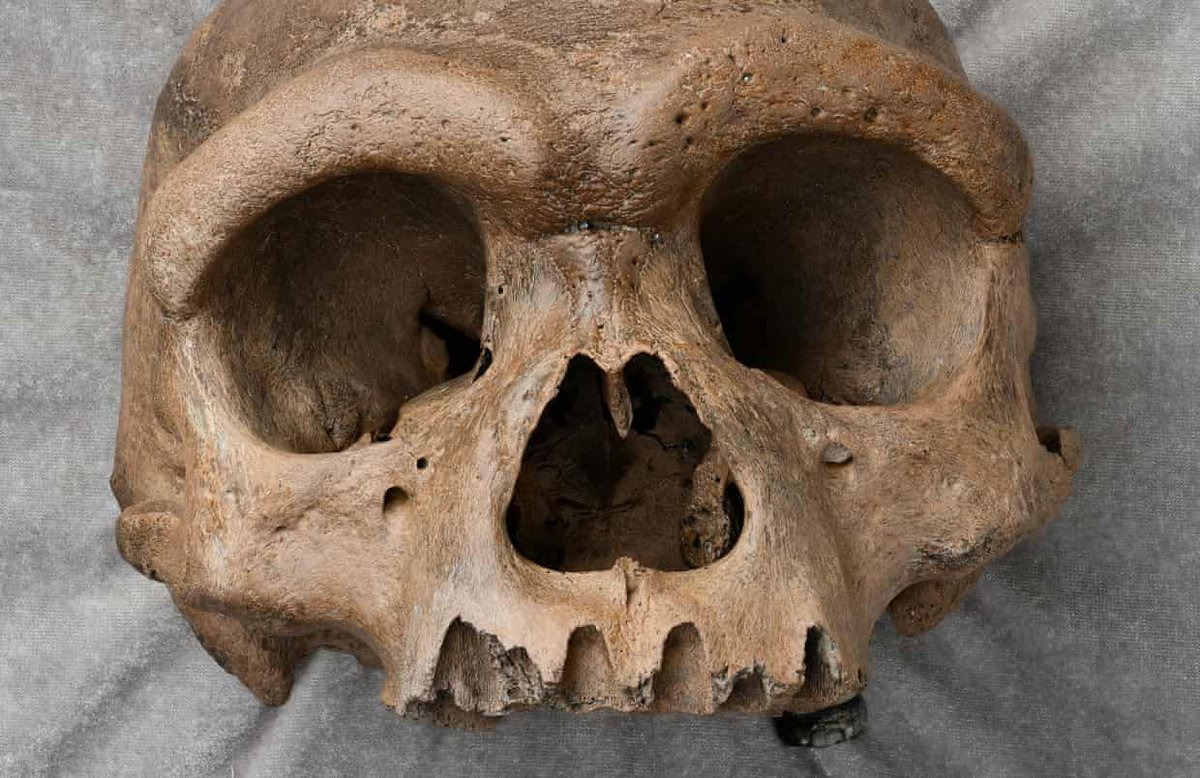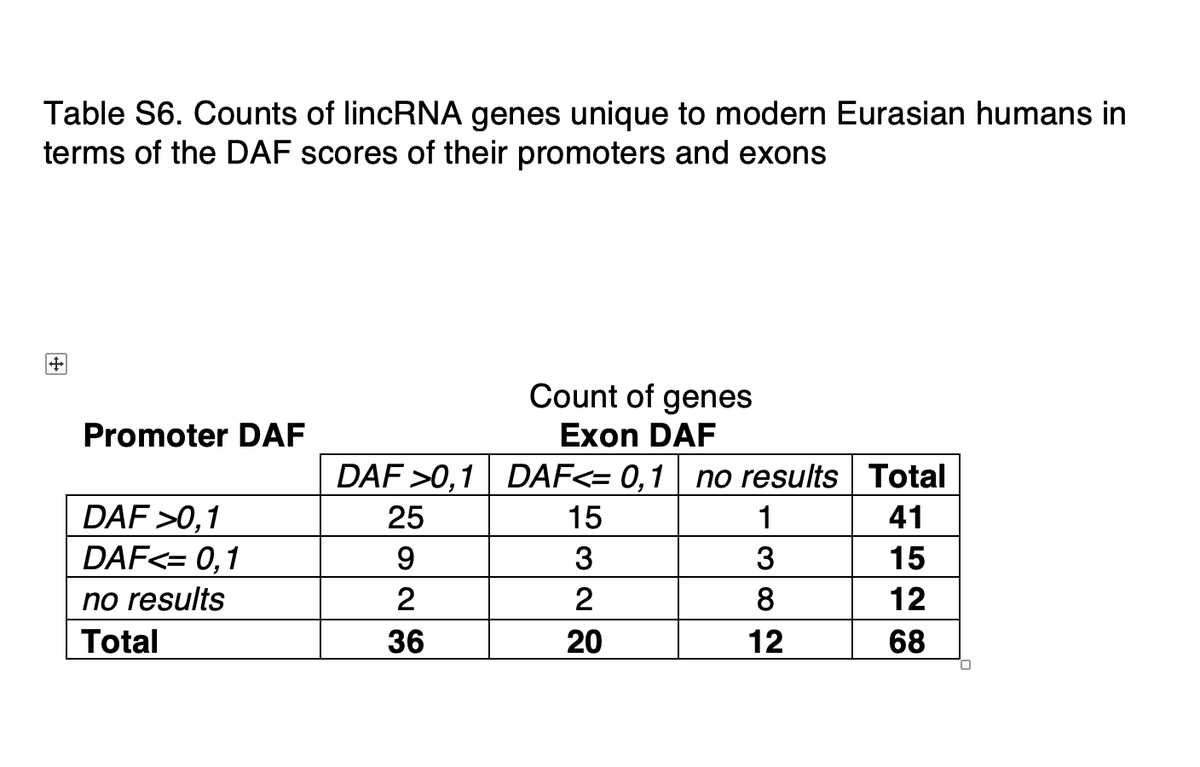
I'm a paleoanthropologist. I explore human fossils and genomes to understand where we came from and what we share with our ancestors.
5 subscribers
How to get URL link on X (Twitter) App


 To be clear, it will take a lot more than 20 gene edits to transform wolf cubs to the physical form and behavior of an extinct species—if our limited data from the past even allows us to judge. Mammoths are not two years away, any more than they were eight years ago.
To be clear, it will take a lot more than 20 gene edits to transform wolf cubs to the physical form and behavior of an extinct species—if our limited data from the past even allows us to judge. Mammoths are not two years away, any more than they were eight years ago. 

 Today's great apes, including chimpanzees and bonobos, two species of gorillas, and three species of orangutans, are a small surviving remnant of the diversity of apes that once existed. Each evolved in ways that helped them survive, just as our ancestors did.
Today's great apes, including chimpanzees and bonobos, two species of gorillas, and three species of orangutans, are a small surviving remnant of the diversity of apes that once existed. Each evolved in ways that helped them survive, just as our ancestors did. 


 The paper's discussion raises lots of reasons why the anatomy of early Homo supports the idea that they were competent hunters. On this I don't disagree, but I think that focusing on "early Homo" here is misleading for several reasons.
The paper's discussion raises lots of reasons why the anatomy of early Homo supports the idea that they were competent hunters. On this I don't disagree, but I think that focusing on "early Homo" here is misleading for several reasons.

 The boring reason why we can't use the Homo longi name is technical. The research puts the Harbin skull together with the Dali skull, and Xinzhi Wu gave that the name Homo sapiens daliensis more than 40 years ago. So IF there's a species, it has to be H. daliensis.
The boring reason why we can't use the Homo longi name is technical. The research puts the Harbin skull together with the Dali skull, and Xinzhi Wu gave that the name Homo sapiens daliensis more than 40 years ago. So IF there's a species, it has to be H. daliensis. 

 Looking at the morphology of the mandible NR-2, it falls within the variation of fossils attributed to Neandertals, and is similar to Krapina, which is around the same age, and Sima, which are early Neandertals. This seems like a basic early Neandertal jaw.
Looking at the morphology of the mandible NR-2, it falls within the variation of fossils attributed to Neandertals, and is similar to Krapina, which is around the same age, and Sima, which are early Neandertals. This seems like a basic early Neandertal jaw. 

 If this date is accurate, it places a good Oldowan assemblage into a temporal context where it's not clear Homo was present at all. These are Paranthropus or Australopithecus tools.
If this date is accurate, it places a good Oldowan assemblage into a temporal context where it's not clear Homo was present at all. These are Paranthropus or Australopithecus tools. 


 For years, anthropologists have looked at the survival of older people with tooth loss as a possible indication of social caring, empathy, and value of tradition and knowledge to social groups—once with Neandertals, more recently with H. erectus. #paleoanthropology
For years, anthropologists have looked at the survival of older people with tooth loss as a possible indication of social caring, empathy, and value of tradition and knowledge to social groups—once with Neandertals, more recently with H. erectus. #paleoanthropology 

 The Zlatý kůň skeleton was discovered in 1950 when a nearby limestone quarry blasted an opening into a previously unknown cave system. The skeletal remains and many artifacts were within a debris cone from a chimney going higher into the cave. doi.org/10.1007/978-1-…
The Zlatý kůň skeleton was discovered in 1950 when a nearby limestone quarry blasted an opening into a previously unknown cave system. The skeletal remains and many artifacts were within a debris cone from a chimney going higher into the cave. doi.org/10.1007/978-1-…

 If you're following this series of illustrations, you may recognize that MH2 is my first repeat, as I earlier featured the MH2 pelvis. The Malapa skeletons are amazing examples of discovery, as each piece emerges from the site, it allows us to test new hypotheses.
If you're following this series of illustrations, you may recognize that MH2 is my first repeat, as I earlier featured the MH2 pelvis. The Malapa skeletons are amazing examples of discovery, as each piece emerges from the site, it allows us to test new hypotheses.



 One way of casting this lack of knowledge is to say maybe there was no "origin", that we are looking backward through a cloudy lens at a gradual mixing process that never had a beginning. This idea comports with what we know about continued Neandertal-African mixing.
One way of casting this lack of knowledge is to say maybe there was no "origin", that we are looking backward through a cloudy lens at a gradual mixing process that never had a beginning. This idea comports with what we know about continued Neandertal-African mixing.

 Several aspects of lactase persistence genetics are not being covered well by press accounts of this paper. Journalists have gone with a pretty simple "counterintuitive lede", i.e., people were drinking milk before lactase persistence mutations were common.
Several aspects of lactase persistence genetics are not being covered well by press accounts of this paper. Journalists have gone with a pretty simple "counterintuitive lede", i.e., people were drinking milk before lactase persistence mutations were common.